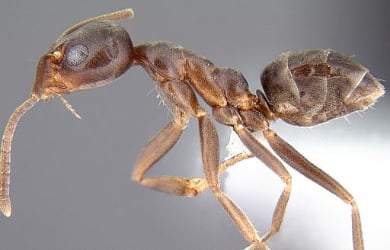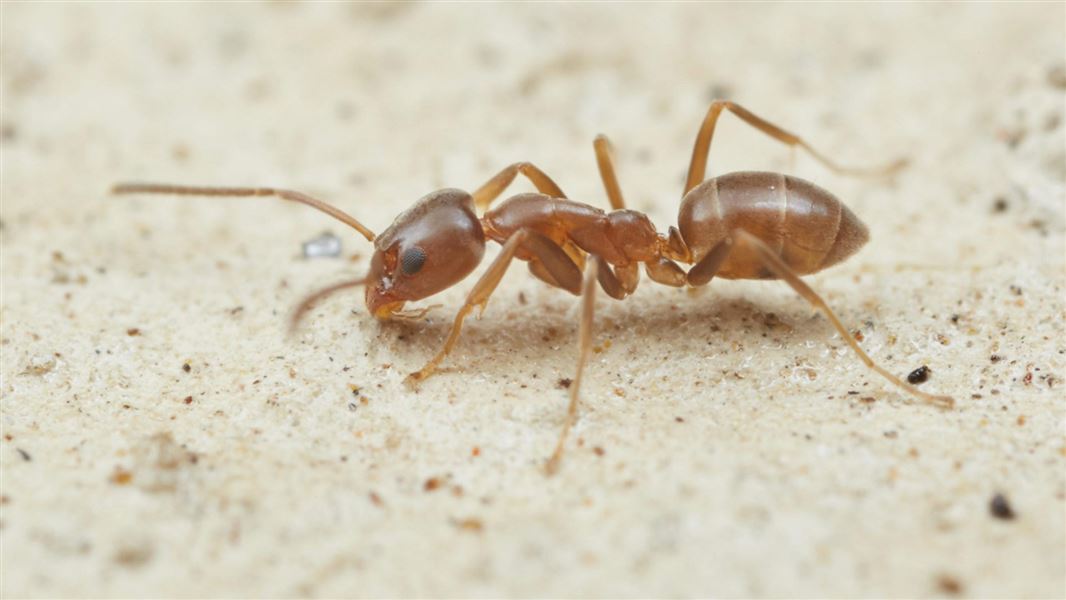Found in: Warm, dry elevated sites in urban and natural areas, often in soil
Control: Fipronil based baits and pesticides
Argentine ants are one of the world’s most problematic ant species. They are aggressive and territorial, so while they are not poisonous, they can bite people.
Unlike other ants, Argentine ant nests cooperate with each other and can build ‘super-colonies’. They form these by connecting their nests through cooperation between worker ants, enabling a high density of nests which can grow to huge numbers.
The colonies have massive appetites, making them more aggressive and destructive because of their sheer numbers.

Argentine ant
How to spot them
We know of Argentine ants in many parts of Auckland, Northland, Waikato, Bay of Plenty, Hawke's Bay, Wellington, Nelson and Christchurch.
The best way to tell them from other ant species is by their colour and trails. They are:
- 2-3 mm long
- honey-brown (most other ants seen in New Zealand are black)
- often moving in large, distinctive trails of five or more ants wide and close together like a multi-lane motorway
- able to readily climb trees.
How do they threaten native species?
Besides being a major household and garden pest, Argentine ants pose a serious threat to our natural areas and biodiversity because of their aggressiveness and appetite.
Argentine ants kill and displace native invertebrates that many indigenous species depend on. They will eat lizards, bird eggs and newly hatched chicks, potentially threatening endangered populations.
During spring and summer, when nests are expanding, they have an insatiable appetite for protein and sweet foods such as honeydew and nectar. Because their diet spans all food types from insects to nectar, they take food sources away from:
- kiwi
- nectar-eating birds such as tuis, bellbirds and silvereyes
- lizards like skinks and geckos
- native invertebrates.
How to remove Argentine ants
A difficult pest to control, fipronil based baits and pesticides are often best for these ants outside the house. For larger super-colonies, you may need to coordinate a community response.
Because Argentine ants link their nests within supercolonies, they can extend hundreds of metres. If the correct amount of pesticide is not used, some nests could receive a sublethal dose of poison. This could lead to the colony separating and sharing less of their resources such as pesticide bait, making them harder to control.
Once you have selected a pesticide, bait these ants by:
- setting out multiple bait stations near established trails, especially along edges of paths, structures, fences, garden timber borders, rock walls
- if using paste or gel baits place out of the sun to prolong their life
- if using liquid baits refresh the bait regularly
- taking care not to disturb their trails.
Help stop the spread
It is important to stop the spread of Argentine ants. Nests can be found in a variety of commodities, especially those associated with the ground and which can easily be moved from place to place. You can help to make sure that they are not moved around by checking the following before moving:
- potted plants (these have the highest risk of spread)
- garden soil, bark, and building materials, especially in bags
- camping gear, especially when visiting in and around reserves
- inside kayak and dingy cavities.
